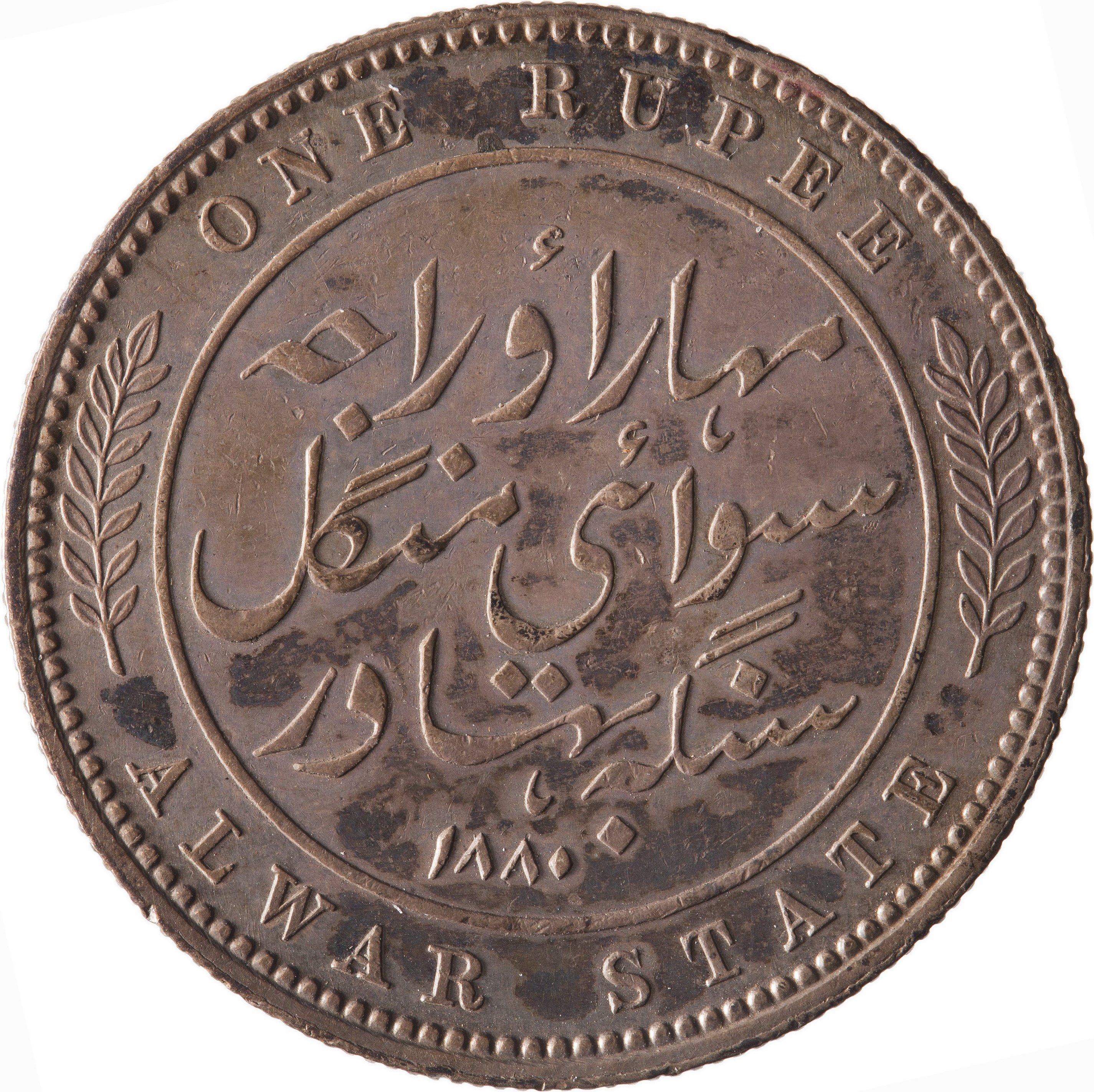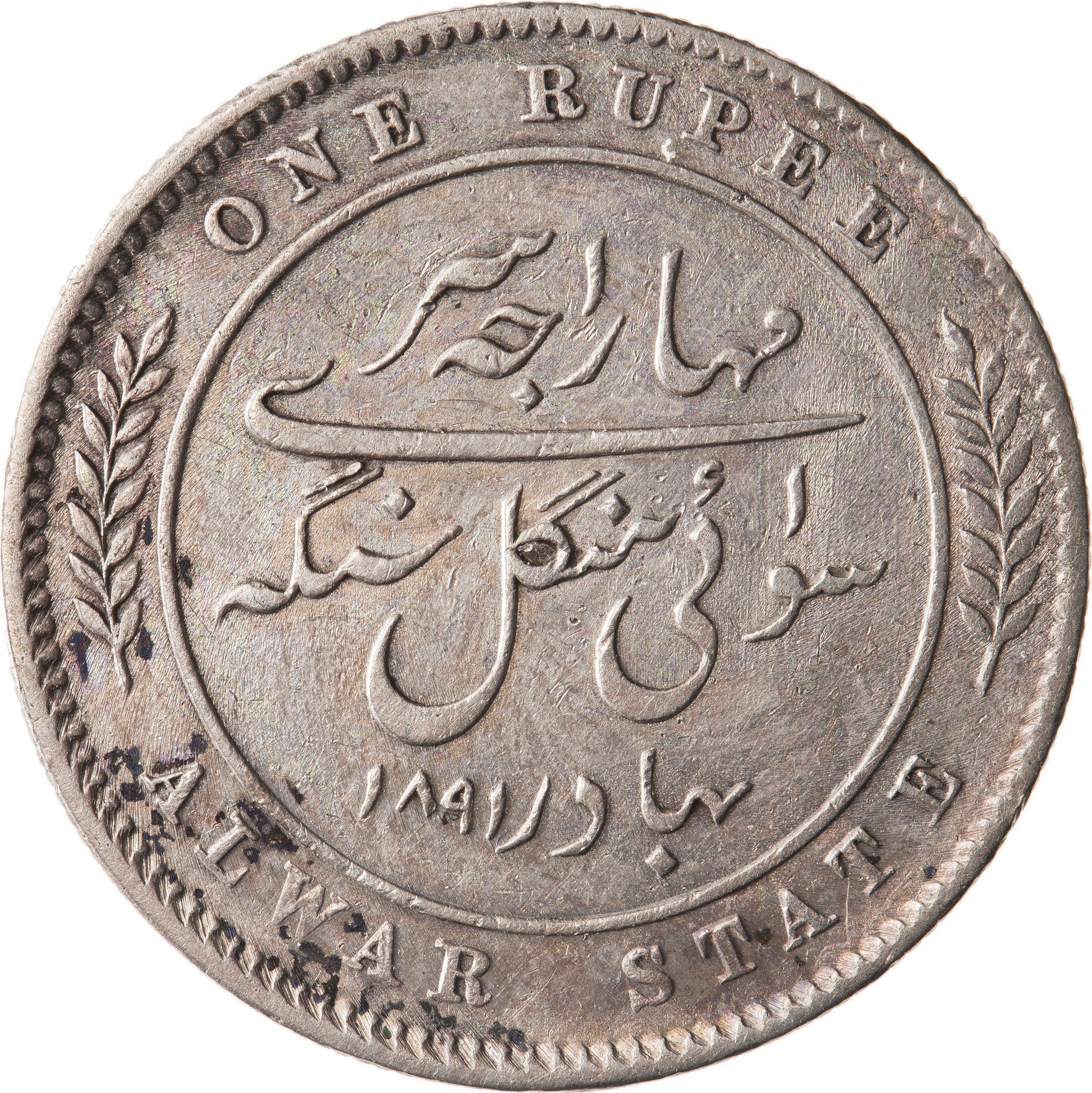Alwar State's Uniform-Like Coinage
Although uniform coinage was introduced in India in 1862 many of the princely states continued to use their own coinage, even into the 20th century (p343, Wiggins, British Commonwealth Coins, 1971). Of the states that persisted with their own coinage, a handful used coinage with the same denominations and specifications as India’s uniform coinage.

One such state was Alwar towards the North of India. Alwar state’s uniform-like coinage consisted only of rupees which were struck at the Calcutta Mint. It had been striking its own half annas and rupees at the local mint in Rajgarh since 1859 (p347, Wiggins, British Commonwealth Coins, 1971) and it accepted the government’s offer to strike its uniform-like coinage in 1877.

Rupees of the first design were struck with dates 1877 , 1878, 1880 and 1882. Wiggins also reports rupees dated 1881 (p348, Wiggins, British Commonwealth Coins, 1971) but it is unclear if such a coin exists. Rupees with a redesigned reverse were also struck in 1891.
| Year | Mintage | Mint |
|---|---|---|
| 1877 | 200,000 | Calcutta Mint |
| 1878 | 206,000 | Calcutta Mint |
| 1880 | 196,000 | Calcutta Mint |
| 1882 | 206,000 | Calcutta Mint |
| 1891 | 160,000 | Calcutta Mint |
Some coins are erroneously dated 1788 - most likely 1877 coins with the numerals accidentally transposed. It is not altogether a surprising error as the dates are in Persian numerals and the Calcutta Mint engraver was most likely British and hence unfamiliar with the foreign script. No further coins were struck in the name of Alwar state after 1891: Mangal Singh ruled Alwar from 1874 to 1892 and presumably the end of his rule signalled the end of a unique coinage for Alwar.
Images provided by Museum Victoria and Museum Victoria under Creative Commons Attribution 4.0 International